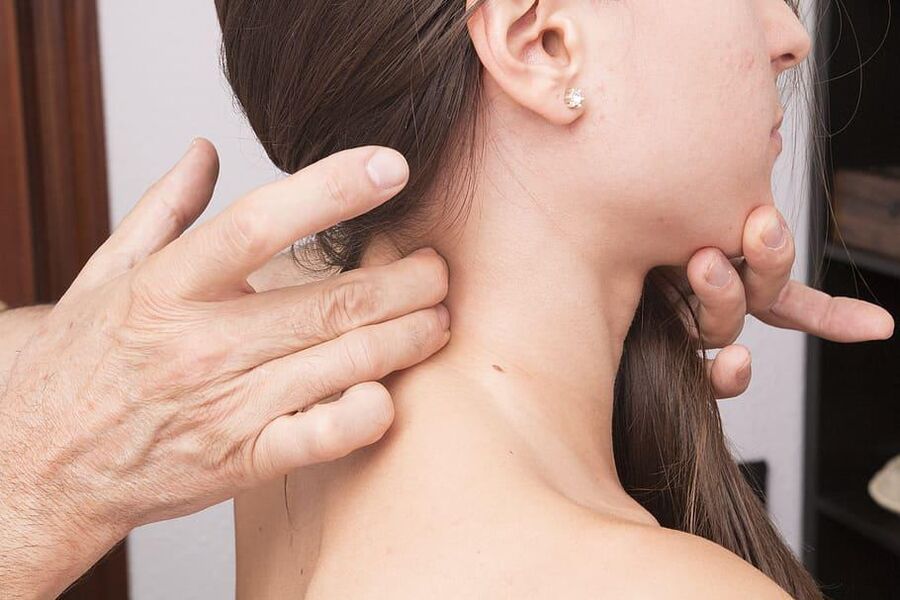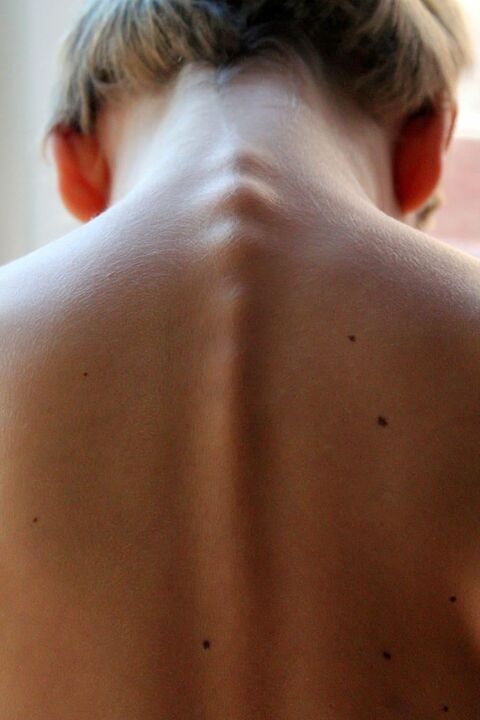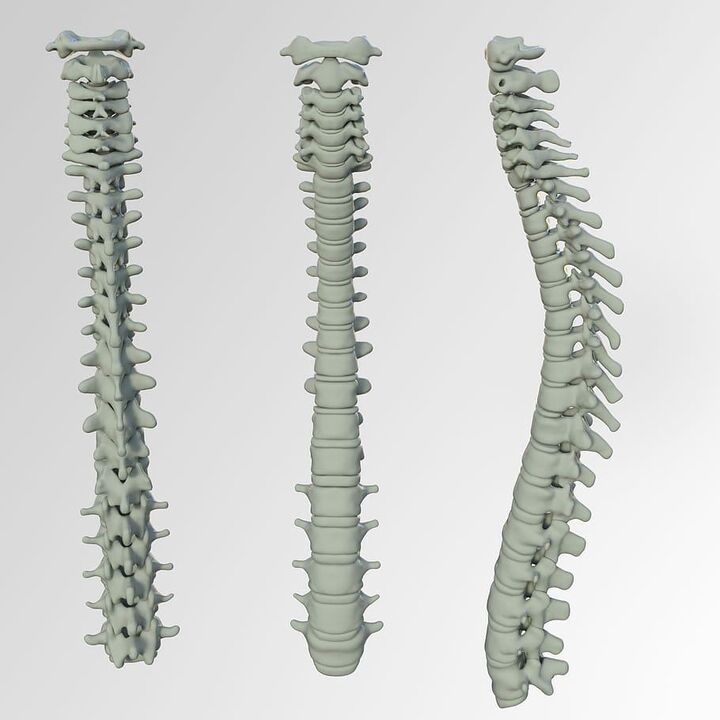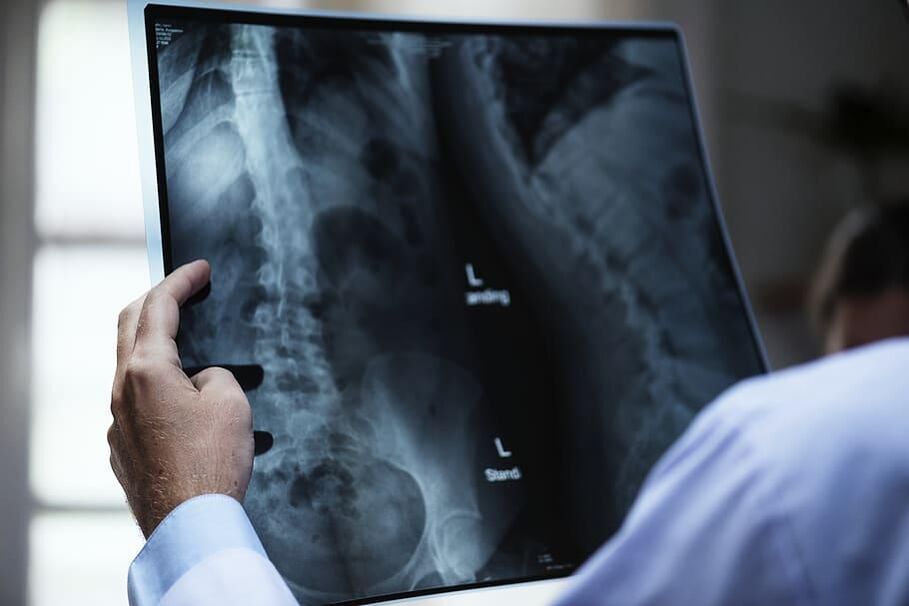Cervical osteochondrose is a very common disease in the modern world. Many people have in the initial phase, but they don't doubt it. The widespread osteochondrosis of the door was due to the fact that people began to sit more and move less. Let's look closer to the reasons for the development of this unpleasant disease and the method of fighting him.

What is cervical osteochondrose?
Thus, cervical osteochondrose is a degenerative-dystemic disease of cartilative tissue of the musculos-bone system. The disease is characterized by pathological changes in the cartilage structure, leading to violation of the anatomical structure of the spine, disrupt the mobility of the skeleton and cause painful sensations. The disease may affect any part of the spine, but due to excessive mobility and miniature vertebrates, the segment of cerdical cerdical acts from this pathology. The neck experiences impressive loads every day. He turns his heads, and even the fact of her retention forces vertebra and interverters to work intensively. From the regular exposure from the outside, interverters are thinner, microcracies appear on them. Over time, their height is reduced, they begin to change thickness in small way and stop meeting their main function - spinal depreciation.
Cervical osteochondrose causes
Causes of disease development, above all, due to age - regulated aging of the body and the development of bone and cartilage destruction. The following causes of osteochondrose can be called:

- Breach
- Reducing engine activity as a result of a seated lifestyle
- Surplus weight, resulting from metabolic disorders, has load on intervertebral discs
- Hereditary factor
- Long-term physical activity
- The abnormality of the spine
Symptoms of cervical osteochondrose
Cervical osteochondrosis has certain events. This is due to the anatomical characteristics of the neck spine. Most often, patients complain about pain of different intensities, increasing from a long stay in one position. Other symptoms are often added in pain:
- Weakness in the upper limb
- Armeness and tingling of hands
- stiffness when moving a head
- Dizziness (suggests damaged elements affected arteries)
- Lip stiffness
- The feeling of whom in the throat
Signs of cervical osteochondrose
In medicine, it is common separate signs of osteochondrose based on the nature of symptomatic events in combination in a unique syndrome. 4 of this syndrome differ:
- Koreshka - indicates the rings of nerve beams, which cause difficult pain, as well as a set of autonomous symptoms (dizziness, weakness, lump in the throat);
- Vertebral artery - Damaged elements combine a large vertebral artery, which is the cause of heavy headaches, dizziness;
- Vertebral - causes pain in the neck itself;
- Cardial - masked under the attack of angina pectoris, he manifested a strong pain in his chest, similar to a heart attack.
Stages of development of cervical osteochondrose
1 degree of osteochondrose

It is characterized by the beginning of destroying interverters. Cracks are formed in a fibrous ring, the strength and elasticity of the disk form, its height decreases why the nervous roots are compressed. The characteristic pain of pain appears. Sometimes in one phase (proprietary) such pain can be absent and osteochondrosis continues with moderate discomfort in the neck.
2 degrees osteochondrose
If osteochondrosis 1. The degree has not been treated, and treatment was not effective, then the second-degree osteochondrose - chronically appears. The pain becomes constant, destruction and the seal of the intervertebral disk continues and leads to a small dislocation of cervical vertebrae. With cervical osteochondrose, this stage can develop dropping downdropping syndrome. This syndrome is characterized by strong pain, and the person is forced to support the head in a fixed state to reduce the pain.
3 degrees osteochondrose
The owner is already almost destroyed, which leads to the complications of osteochondrose - the protrusion of the intervertebral disk or intervertebral hernia. At 3 stages of osteochondrose, pain intensity can be reduced, because crispy tissues on the disk between vertebrae is higher, which means no sources of pain, however, does not fully remain completely.
Diagnosis of cervical osteochondrosis
If there is any doubt about the presence of cervical osteochondrose, it is necessary to contact the medical institution in a timely manner. A comprehensive diagnosis will help identify diseases, assess her degree and understand the causes of pathology development. The preliminary diagnosis is performed on the basis of inspection and palpation - with osteochondrose, the tension of cervical muscles is noticed, in some cases the spine deformity was observed. After objective diagnosis, the doctor sends the patient to additional studies. The following diagnostic methods are used to confirm the diagnosis:
The preliminary diagnosis is performed on the basis of inspection and palpation - with osteochondrose, the tension of cervical muscles is noticed, in some cases the spine deformity was observed. After objective diagnosis, the doctor sends the patient to additional studies. The following diagnostic methods are used to confirm the diagnosis:
- Magnetic resonanceCamography
- Radiography (side and flat)
- Computer Tomography
To determine the reason for the development of pathology, ultrasonic overview of the nearby bodies, the ECG hearts, the duplex scan of blood vessels, blood vessels and urine can be further prescribed.
Cervical osteochondrose treatment
The treatment of osteochondrose requires an integrated approach. For temporary pain removal, pain medicines are used, but the basis of therapy is physical therapy and massage. Massage helps mitigate muscle hypertension, improving pain. Procedures and returns normal blood circulation, improving the supply of damaged tissues. Based on the results of a massage exchange rate, the voltage is removed from the cervical region, the load on the spine is redistributed. Treatment of medicines. Drugs relieve pain and inflammation, return blood circulation and remove cramps in neck muscles. The following drug groups can be used for this: Glucocorticosteroids, analgesics, muscle relaxants, etc. Physiotherapy treatment. In addition to taking drugs to relax near the uterine muscles, eliminate cramps and normalize blood circulation will help physiotherapy, acupuncture, laser effect, magnifier, phonopower, etc.  Therapeutic gymnastics. Special physical exercises will help the patient strengthen the muscle framework, align the posture and improve blood supply to the upper part of the spinal column. In the case of advanced stages of osteochondrose of the cervical spine or with insufficient efficiency of conservative methods, operation is required.
Therapeutic gymnastics. Special physical exercises will help the patient strengthen the muscle framework, align the posture and improve blood supply to the upper part of the spinal column. In the case of advanced stages of osteochondrose of the cervical spine or with insufficient efficiency of conservative methods, operation is required.
Prevention of cervical osteochondrose
To prevent the development of cervical osteochondrose, it is recommended: in the session, be sure to work five-minute breaks each hour, avoid loads on the neck; Do not make sharp head movements, holding monitor; Avoid hypothermia; engage in physical education, swimming; eat properly; The dream should be on a solid mattress and on a low pillow, the corner of the bent door should not be more than 15 degrees; After 25 years, avoid shock load on your spine (jumping, running). In any case, when the symptoms of the disease arise - be sure to visit the doctor. Not just sedicate!













































